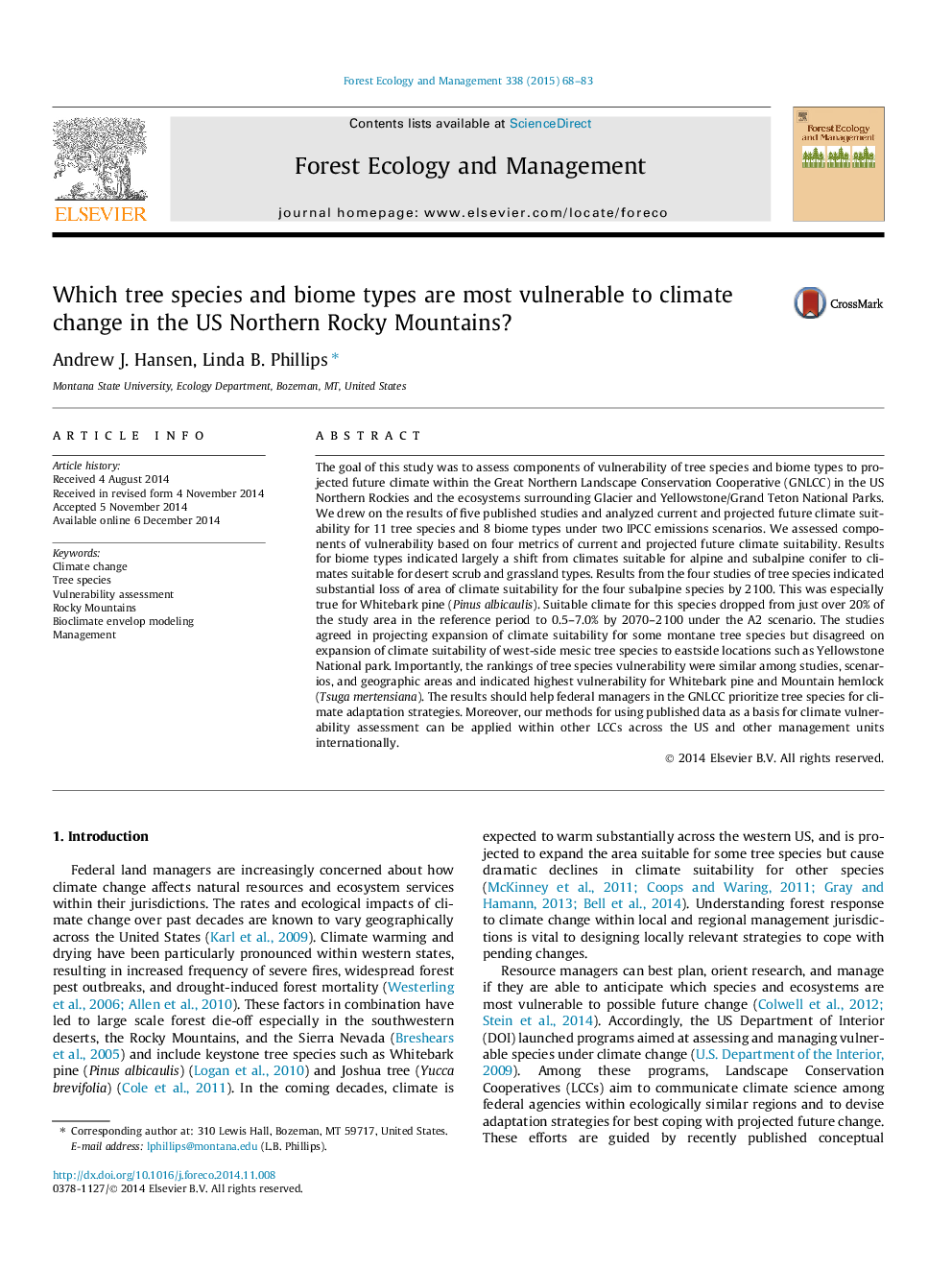| کد مقاله | کد نشریه | سال انتشار | مقاله انگلیسی | نسخه تمام متن |
|---|---|---|---|---|
| 86381 | 159183 | 2015 | 16 صفحه PDF | دانلود رایگان |
• Coniferous biomes decreased and nonforest increased under IPCC suitability scenarios.
• Subalpine tree species decrease and montane increase in climate suitability.
• Whitebark pine and Mountain hemlock were most vulnerable currently and in future.
• This is a meta analysis for US Dept of Interior work on climate adaptation planning.
The goal of this study was to assess components of vulnerability of tree species and biome types to projected future climate within the Great Northern Landscape Conservation Cooperative (GNLCC) in the US Northern Rockies and the ecosystems surrounding Glacier and Yellowstone/Grand Teton National Parks. We drew on the results of five published studies and analyzed current and projected future climate suitability for 11 tree species and 8 biome types under two IPCC emissions scenarios. We assessed components of vulnerability based on four metrics of current and projected future climate suitability. Results for biome types indicated largely a shift from climates suitable for alpine and subalpine conifer to climates suitable for desert scrub and grassland types. Results from the four studies of tree species indicated substantial loss of area of climate suitability for the four subalpine species by 2100. This was especially true for Whitebark pine (Pinus albicaulis). Suitable climate for this species dropped from just over 20% of the study area in the reference period to 0.5–7.0% by 2070–2100 under the A2 scenario. The studies agreed in projecting expansion of climate suitability for some montane tree species but disagreed on expansion of climate suitability of west-side mesic tree species to eastside locations such as Yellowstone National park. Importantly, the rankings of tree species vulnerability were similar among studies, scenarios, and geographic areas and indicated highest vulnerability for Whitebark pine and Mountain hemlock (Tsuga mertensiana). The results should help federal managers in the GNLCC prioritize tree species for climate adaptation strategies. Moreover, our methods for using published data as a basis for climate vulnerability assessment can be applied within other LCCs across the US and other management units internationally.
Journal: Forest Ecology and Management - Volume 338, 15 February 2015, Pages 68–83
